Instructions for authors
The Journal of Strategic Trade Control welcomes manuscripts in different categories:
articles (theoretical analysis, case studies, or discussion of emerging issues); viewpoints
(practitioners’ perspectives, policy proposals or critiques, commentary, innovative opinion pieces); reports (research projects or accounts of new development);
book reviews (see below).
The Journal accepts submissions on a
rolling basis. The manuscript will be subject to the peer-review
process (see below), at the end of which the author will be notified of its acceptance or rejection and will be informed of the Issue where the manuscripts will appear.


Review Process
The Journal of Strategic Trade Control operates a double-blind peer-review system. Submissions will be evaluated by at least two reviewers with expertise in the subject matter of the manuscript, after having been screened by the Editor. The editors will make every effort to notify authors of the decision within twelve weeks of receipt of their manuscripts. If recommended for publishing, authors are expected to integrate reviewers’ comments and send back a final draft.
The
Journal reserves the right to reject any submission without elucidation. Manuscripts that are accepted on the condition of revision may be subject to a second review after revisions are received. Note that book reviews and viewpoints undergo a less rigorous peer-review process than articles.
If an author has signed a non-disclosure agreement that remains in force and is relevant to the contents of a manuscript, it is the author’s responsibility to obtain approval for publication before submitting the manuscript for consideration.
If a current or former employer requires a pre-publication review, it is the author’s responsibility to obtain authorization before submitting the manuscript for consideration.
Our topics
Criteria for acceptance
Submissions will be judged upon the following criteria: Adequacy to journal aims, originality and clarity.
The editor welcomes submissions that match the editorial focus of the journal, that is strategic trade control (STC) and any related topic. Possible topics include:
Dual-use items, conventional weapons, multilateral export control regimes, non-proliferation, historical analysis, STC in research, intangible transfers of technology, Internal Compliance Programmes, academic proliferation, legal instruments and frameworks, national implementation, sanctions, foreign direct investment (FDI), emerging technologies, cybersurveillance, data analytics, STC outreach, industry (controls implementation etc), proliferation financing, illicit strategic trade (proliferation networks etc), enforcement, customs and commodity identification, capacity building, CBRN, torture-related items trade, diamonds, minerals.
This list is not all-inclusive; authors are free to submit manuscripts on other topics that may be of interest to the export/strategic trade control community. Topics not listed can be suggested to the Editor.
Submissions should report original scientific research: the main results and conclusions must not have been published or submitted elsewhere. Manuscripts must contribute new information, ideas, analysis and insights to the export/strategic trade control field. The editors will not consider manuscripts under simultaneous submission elsewhere or have been published elsewhere. Only original work will be considered.
The references contained in a manuscript and the familiarity that the author(s) show(s) with relevant earlier work are elements that may be taken into consideration to measure the originality of the manuscript.
Plagiarism is grounds for rejection.
Authors are expected to submit grammatically correct and linguistically appropriate manuscripts. The thesis of a manuscript should be readily apparent, and manuscripts should prefer the use of active voice, follow a logical order and not rely excessively on jargon. Submissions must conform to the academic style of the journal (see below).
Submissions of manuscripts and associated files (e.g. tables, figures etc) should be done electronically via e-mail attachment to the Editorial Office at jostc@uliege.be with the following required elements.
Author bio/contact information: Include a short biographical paragraph (of 100-150 words per author) that contains the author(s)’ full names followed by current positions, qualifications, and recent publications of the author(s), as well as the email addresses for all co-authors.
Abstract: Include one paragraph (150–250 words) that summarises the article’s main points and contributions to the field. It provides the background (the broader context where the question addressed is placed and the purpose of the study); methods (the main methods or approach used); the results (the article’s main findings); and the conclusion (main conclusions or interpretations). The abstract should not repeat verbatim the opening paragraph or other text from the submission. Include the abstract at the top of the submission.
Manuscript: All submissions must be in Microsoft Word and should adhere to the Journal’s style guidelines (see below). Submissions must be 1.5-spaced with standard page margins and a 12-point font. The text and all heads should be left-justified. Leave only one space between the period at the end of a sentence and the beginning of the next sentence. Do not indent paragraphs (use a blank line to separate paragraphs). Any brief acknowledgements or disclaimers should be placed at the end of the submission. Tables and/or figures must be submitted in separate documents (see guidelines below) .
Key-words : include a list of 5-8 key-words.
Tables and Figures : if included, tables and figures should be sent in a separate attachment, in the highest possible quality. Tables and figures copied directly from other sources without permission will not be accepted.
Word counts include footnotes and the endnotes.
Articles should be no shorter than 4,000 words and not exceed 10,000 words.
Viewpoints, commentary and reports may be shorter in length and should not exceed 7,500 words. Book reviews should not exceed 4,000 words.
The editors strive to produce an interdisciplinary journal that can be read and understood by scholars and policy makers alike. Specialized terms that will not be familiar to most readers should be used only where needed, and with brief definitions or explanations, either in the text or in endnotes.
Readers should be able to identify both the source materials that support a claim and the reasoning that connects the source materials to the claim.
Please, note that the detailed style guidelines can be found in the following “Guidelines” pdf (also downloadable at the bottom of this page).
Manuscript not using the following style guidelines will be sent back to the authors.
Format
- Font: Times New Roman, 12 point
- Margins: “normal” (i.e. top: 2,54 cm ; bottom: 2,54 cm; left: 2,54 cm; right: 2,54 cm)
- Spacing: Fully justified
- Non-English words: Italicized
- Spelling: Follow the Webster’s Third New International Dictionary
Style
The Journal of Strategic Trade Control follows style guidelines as delineated in the Chicago Manual of Style, 17 th Edition. Please strictly follow the style. Manuscripts that do not follow the style guidelines will be sent back to authors for revision. Manuscripts should be edited for correct English language usage before they are submitted.
Citations
Manuscripts submitted without proper citation format will be returned to the author(s) for editing before they can be sent for peer review. The Journal of Strategic Trade Control uses the notes and bibliography system of Chicago Manual of Style 17 th edition. For a quick guide, please see https://www.chicagomanualofstyle.org/tools_citationguide/citation-guide-1.html. Some citations examples are provided in the downloadable “Guidelines” pdf at the bottom of this page..
Ibid. and op. cit.
The abbreviation ibid. should not be used in favour of shortened citations. They usually refer to a single work cited in the note immediately preceding.
Note that either abbreviated form (author only or ibid.) is appropriate only when it refers to the last item cited; where this is not the case, or where the previous note cites more than one source, the fuller form of the shortened citation must be repeated. Note also that with the preferred short form, a page reference must be repeated even if it is the same as the last-cited location.
Shortened citations
The most common short form consists of the last name of the author and the main title of the work cited, usually shortened if more than four words.
“See” and “cf.”
Notes are often used to invite readers to consult further resources. When doing so, authors should keep in mind the distinction between see and cf., using cf. only to mean “compare” or “see, by way of comparison.” Neither term is italicized in notes.
Submit your article
Please, submit your manuscript to the Journal by sending it and any associated files such as tables or figures to our email address.

